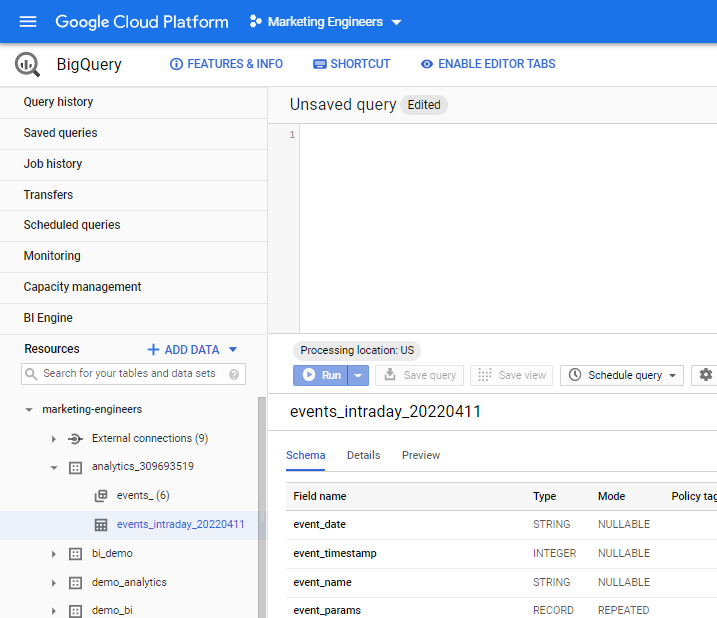Google Analytics 4 is coming! Should you be afraid? How to take business advantage of this important change?
On March 16, 2022, Google officially announced the forced migration from Google Universal Analytics to Google Analytics 4. From July 1, 2023, the existing properties will no longer collect new data. To maintain the continuity of data collection and reporting, companies will face the need to migrate to the new GA version. This will be a big challenge for business as GA4 is a revolution.

What are the reasons for this revolution, how to prepare and how to take advantage of it? Welcome to the first in a series of articles on the business aspects of GA4.
The genesis of change
The widely used version of Google Universal Analytics was introduced in 2005. For context, this was the year YouTube was launched and Angela Merkel became the first female chancellor of Germany. It is easy to guess that the assumptions adopted then by the creators of Google Analytics do not match today’s realities. The mobile revolution or the issues related to the collection of sensitive data and the legal regulations in this area go far beyond the possibilities of the current GA version. Thus, the beta version of GA4 services (then called App + Web), presented in November 2019, was not so much an evolution as a revolution. This revolution will soon affect everyone who runs a business based at least in part online.
Key changes
One of the key benefits of Google Analytics 4 is combining data from various devices and platforms.
Universal Analytics poorly supports combining traffic data from desktop and mobile browsers. When you added a mobile application to the mix, other tools had to be additionaly implemented(e.g. Google Analytics for Firebase). This resulted in difficulties in combining and comparing the collected data. As a result, the business was practically deprived of the possibility of a comprehensive view of the user, regardless of the device or platform.
GA4 solves this problem, enables the connection and unification of cross-platform and cross-device data. This enables a simple and more accurate measurement of performance at the user level. Finally, it is possible to calculate such important metrics as life-time-value (LTV ) or customer acquisition cost (CAC).

Another problem addressed by the advent of GA4 is the widespread use of adblocks by users. These plugins, as well as the actions of technology giants such as Google or Apple, and finally regulators (GDPR), have significantly hindered the proper measurement using cookies. GA4 is moving away from cookies towards behavioural identifiers from a variety of sources.
Finally, at a time when enterprise data is one of the most valuable assets and their use is a source of market advantage, GA4 meets these needs. Unlike Universal Analytics, GA4 we can automatically and cost-free send unsampled data to a data warehouse and then analyse it. So far, it was an extremely expensive feature.

Business opportunities
The main opportunities that will emerge after the introduction of GA4 include:
- the ability to measure business efficiency at the user level (e.g. LTV, CAC),
- the ability to analyse data „cross-platform” and „cross-device” giving a complete picture of the customer,
- partial defence against adblocks and the limited effectiveness of cookies (the so-called cookieless world),
- the possibility of conducting analyses on complete raw data, loaded automatically to the data warehouse,
- possibility of enriching data from the website / application with data from other systems (e.g. transaction system).
Challenges of migrating to GA4
However, migration to GA4 also poses a number of challenges for business:
- the challenge of correct implementation and configuration of the tool,
- the challenge of changing the way you think about the tool (a different data model) and learning it,
- the challenge of maintaining the continuity of data and reporting,
- the challenge of finding resources for tool configuration, recreation of reports and analyses.
How to prepare your business for migration
When asked when is a good time to start thinking about migrating to GA4, the answer is now. Considering that the implementation will take 3-6 months and it is worth keeping the 6-month double-tracking period, there is not much time left.
Below is an example timeline of full GA4 implementation including main responsibilities and required workload:
- implementation of double tracking (simultaneous tracking with Universal and GA4 services) – Analytics Team – 2-3 months:
- audit of the current configuration and collected events – Business Team- 1 week,
- verification of event coverage and their possible expansion – Business Team- 1 week,
- code implementation and modification of dataLayer – Dev Team- 3 – 4 weeks,
- implementation of validity tests – Analytics Team- 1 week,
- verification of the validity of the collected data – Analytics Team- 2 weeks,
- adding traffic from mobile applications – Dev Team- 3 weeks,
- educating the organisation on the tool and how to use it – Analytics Team- 3-4 weeks,
- preparation of own reports and visualisations in GA4 – Analytics Team- 3 weeks,
- configuration of data warehouse in BigQuery and data transfer – Analytics Team- 3 weeks,
- preparation of data processing in BigQuery and creation of business reports and visualisation outside of GA4 – Analytics Team- 1 month,
- implementation of data and configuration correctness monitoring – Analytics Team- 1 month.
———————–
- Analytics Team – an analytical team responsible for collecting and analysing data,
- Dev Team- development team responsible for maintaining the website code as well as the database,
- Business Team – management, marketing, sales teams and all other people who ultimately use reports prepared by the analytical team.
———————–
What questions to ask yourself right now
As the first step in this process, we recommend asking and answering the following questions in your organisation:
- How does my organisation currently use Google Analytics? Is it optimal?
- What are we missing in the analysis of our business?
- Who in my organisation should be responsible for the migration process?
- Do we have the competence and resources to carry out such a migration on our own? Are we able to use all the opportunities resulting from the change?
In the next article, we will compare in detail the changes GA4 introduces to Universal and how they affect the organisation.
If you have questions related to topics covered in this article don’t hesitate to reach out to us!
Kamil is a digital marketing expert with 9+ years of experience in campaign management and web tracking. – ex-iProspect I ex-Marketing Wizards. Global Winner of Google Online Marketing Challenge 2012. Great fan of football, snowaboarding and cycling. You can follow him on LinkedIn.
- Written by: Kamil Borkowski
- Posted on: 11/04/2022
- Tags: GA4, Google Universal Analytics

